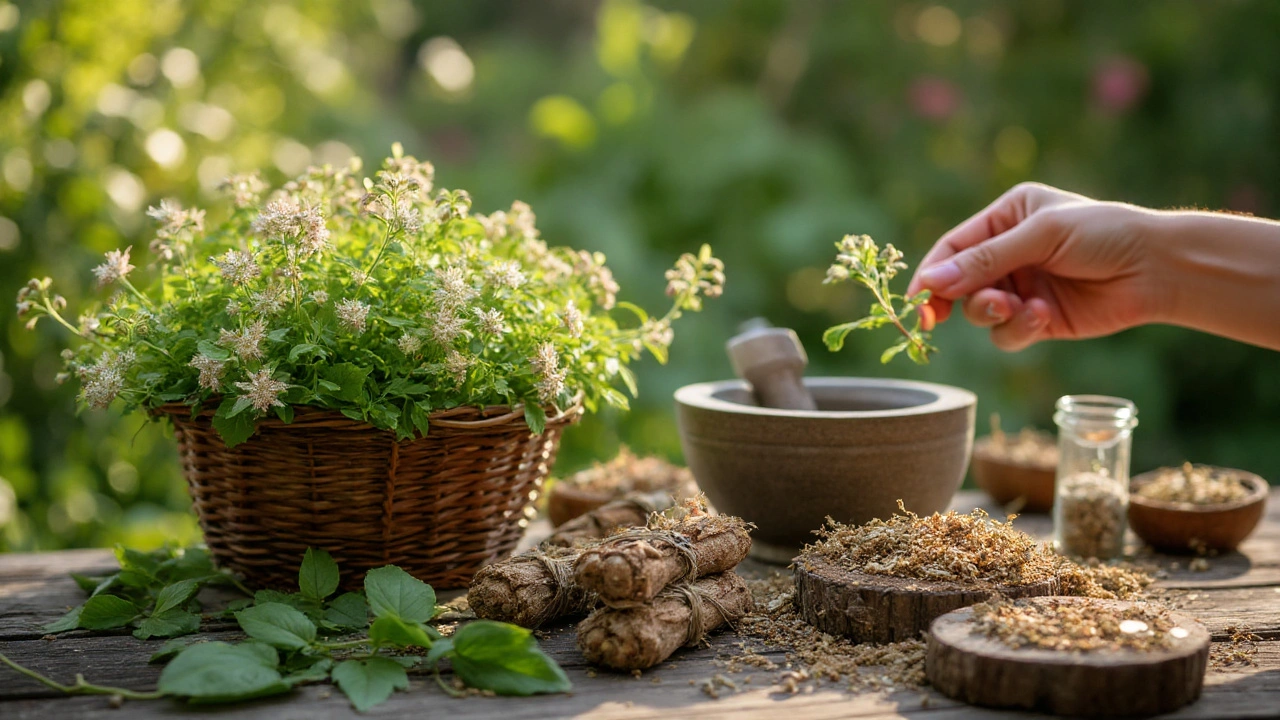Herbal Extraction: Easy Steps to Turn Plants into Powerful Supplements
Ever wonder how a handful of dried herbs becomes a capsule, tincture, or tea that actually works? That’s the magic of herbal extraction. It’s simply pulling the good stuff out of a plant and keeping it stable enough for you to use. Below you’ll find the basics, why it matters, and a couple of methods you can try in your kitchen.
Why herbal extracts are worth the effort
When you eat a leaf or a root, the body only gets the chemicals that survive the cooking process. Extraction concentrates those chemicals, so you get a stronger, more reliable dose. That’s why many people prefer tinctures, powdered extracts, or oils over raw herbs – they’re easier to dose and often more potent.
Extracts also let you store the benefits longer. A well‑made alcohol tincture can sit for months without losing its activity, while fresh herbs might spoil in days. Plus, you can avoid unwanted plant parts like fibrous stems, which means a cleaner product for your body.
Simple at‑home extraction methods
1. Alcohol Tincture (the classic)
Grab a clean jar, fill it with dried herb (crushed but not powdered), and cover with a high‑proof spirit like vodka. Seal it and shake daily for 2‑4 weeks. Strain through cheesecloth, bottle the liquid, and label it. Use a few drops in water or under the tongue as needed.
2. Glycerin‑Based Extract (for kids or no‑alcohol fans)
Mix food‑grade glycerin with distilled water (1:1) and use the same herb‑to‑liquid ratio as the alcohol method. Let it sit for about a month, shaking occasionally. The result is a sweet, alcohol‑free extract that’s gentle on the stomach.
3. Hot Water Infusion (quick tea‑style)
Boil water, pour over 1‑2 teaspoons of dried herb per cup, cover, and steep for 10‑15 minutes. Strain and drink. This method extracts water‑soluble compounds fast, but it won’t pull out everything an alcohol tincture would.
4. Oil Infusion (for skin or cooking)
Combine dried herb with a carrier oil such as olive or coconut. Warm the mixture in a double boiler on low heat for 2‑3 hours, stirring occasionally. Cool, strain, and store in a dark bottle. Use the oil for massages or add a few drops to salads.
Whichever method you pick, a few rules keep things safe: use clean containers, label every batch with date and herb, and store in a cool, dark place. If you’re unsure about dosage, start with the smallest amount and see how you feel.
Ready to experiment? Pick a herb you trust—like chamomile, ginger, or echinacea—and give one of these methods a try. In a few weeks you’ll have a ready‑to‑use extract that’s cheaper than buying a commercial product and fully under your control.
Remember, extraction is about preserving the plant’s best parts, not creating a miracle cure. Pair your extracts with a balanced diet and regular check‑ups, and you’ll get the most out of nature’s pharmacy.
Unlocking the Full Potential of White Soapwort as a Dietary Supplement
- DARREN LLOYD
- 16
Learn how to maximize the health benefits of white soapwort (Saponaria officinalis) with proper extraction, dosing, safety tips, and quality selection for optimal dietary supplementation.
READ MORE
